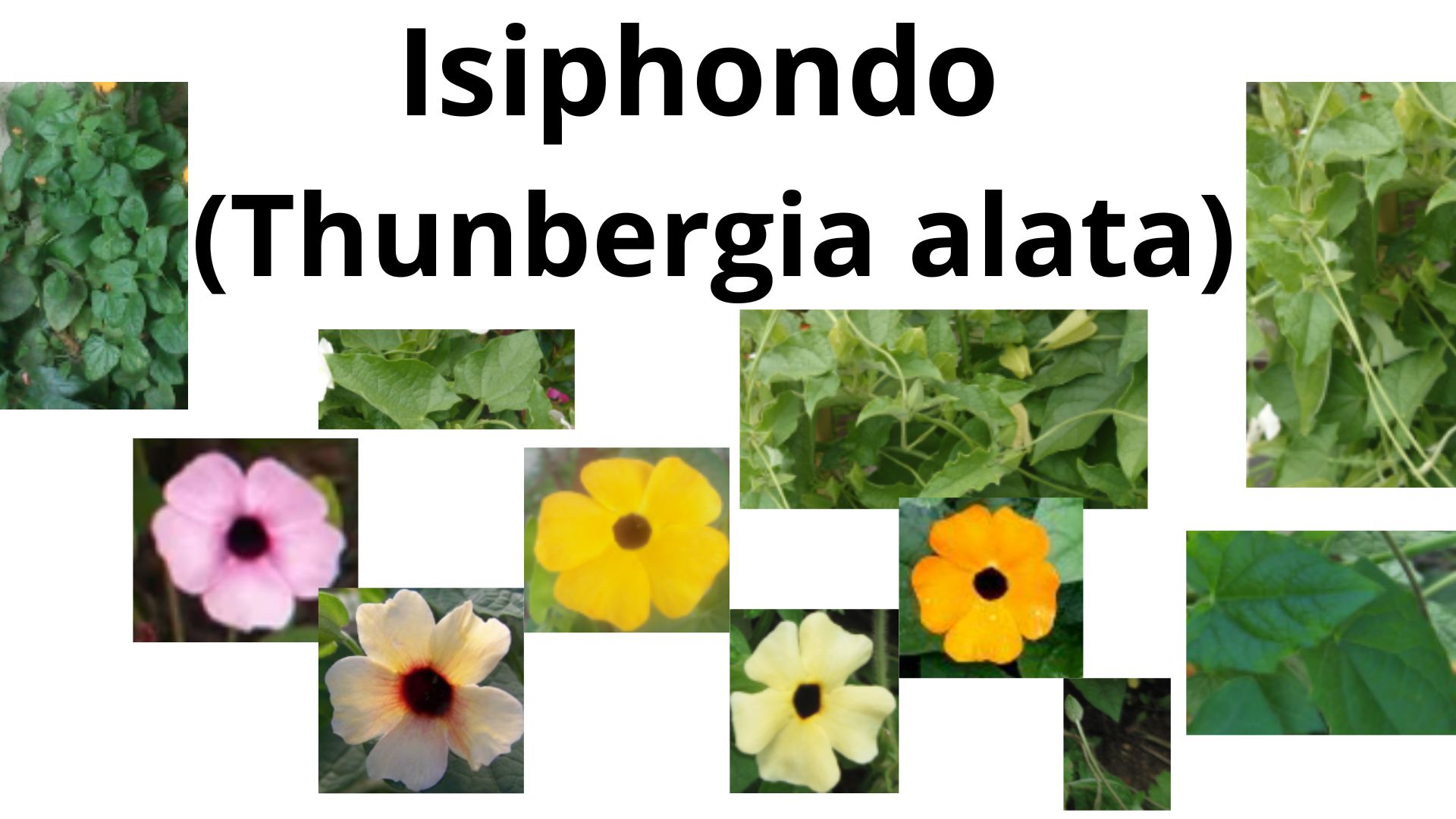Family: Acanthaceae
Scientific name: Thunbergia alata
Authority: Bojer ex Sims
Common names: isiphondo (Zulu), black-eyed susan (English), swartoognooi (Afrikaans)
Isiphondo is scientifically known as Thunbergia alata. The scientific name was given to honour Carl Peter Thunberg, a Swedish botanist, doctor, explorer, and author. The English common name is Black-eyed Susan, not because Susan always has a black eye, but the inner part of the flower is black in colour and the outer part is a bright orange, yellow, or white – resembling an eye. This plant is usually cultivated for its flowers, which look like daisies from afar. The plant can easily be identified by its heart-shaped leaves.
Isiphondo is a fast-growing pioneer climber (or vine). It is short-lived and long-flowering. Long flowering means the flowers start blooming while they are still young and lasts for a long time.
This plant is native to tropical parts of east Africa. It can be found growing in other parts of the world as an ornamental plant. In some parts of the world, such as Hawaii, Australia, and Colombia, it is considered an alien invasive plant, a plant that is introduced to a new environment and becomes overpopulated, harmful to the new environment, and are considered as one of the main causes of the loss of biodiversity. In Colombia, it is on the list of the ten most problematic invasive plants.
The plant grows along the margins of forests where it is humid but can also be found growing in dry open areas. It can be found growing along the roadside. Besides being cultivated as an ornamental plant for its attractive flowers, it is also planted as a groundcover, and to cover a fence.
Uses
In traditional medicine, the plant is used to treat a legion of ailments and conditions:
- The leaves can be dried and ground into powder. The powdered leaves are used to treat snake bites.
- The fresh root extract is used to make a decoction that is taken as a health tonic and an aphrodisiac.
- The leaves are used for curing boils.
- The phytochemicals in the plant such as saponins and steroids make it ideal for treating skin problems, cellulitis, back and joint pains, eye inflammation, piles, and rectal cancer.
- The plant is used to treat inflammatory illnesses such as fever, cough, and diarrhoea.
- This plant is also used to treat gallsickness and ear infections in livestock. It is also used as a vegetable feed or fodder.
The Luffin P1 present in this plant is reported to have anti-HIV activities. Luffin P1 are smallest ribosome-inactivating peptides from the seeds of Luffan cylindrica found to have anti-HIV-1 activity in HIV-1 infected C8166 T-cell lines and be able with HIV Rev Response Element.
Isiphondo is used in the standard set of South African postage stamps. A postage stamp is a small piece of paper that you attach to a letter or parcel. The stamp indicates how much you paid to send the package via snail mail.
The different Thubergia species have different variations of the name isiphondo. Thunbergia alata is called isiphondo. Thunbergia atriplicifolia is known as isiphondo esincane. Thunbergia natalensis is known as isiphondo esikhulu.
Isiphondo esincane is used as a love potion and the green fruits are good for washing hair. Isiphondo esikhulu is used as a good luck charm, people in the rural areas use it as a charm for a happy marriage and a happy home.
Safety precaution
The use of traditional medicine in prescribed dosages will yield good results. Misuse and abuse may lead to complications. To learn about correct dosage, consult a traditional healer or a herbalist. You can also visit imithiyesintu.co.za or email: info@imithiyesintu.co.za to learn more about traditional medicine.
